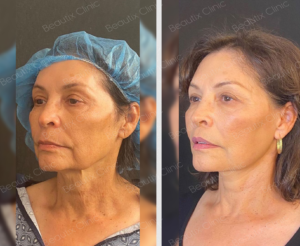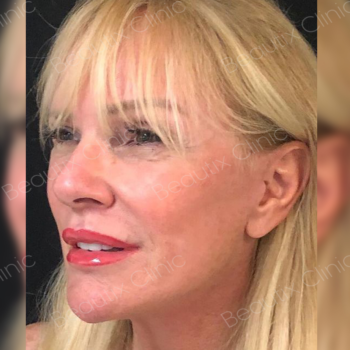Need A Face Lift ?
Contact us
Contact us
Face Lift. Known also by the technical name rhytidectomy, the facelift is a surgical procedure that rejuvenates the face. Through incisions in key places of the patient’s face, the surgeon is able to attenuate the effects of ageing.
The procedure deals mainly with skin hanging loosely from the face, mostly around below the cheeks around the jawline. It also deals with hanging folds of skin that forms creases of varying depth around the nose and mouth. In addition to that, it’s possible for a separate surgical procedure known as neck lift to happen during the same operation. Those procedures deal specifically with the loose skin and hanging folds on around the neck area.

you are in good health and do not have any diseases that could impede their recovery.
you are over 40 years old.
you have skin elasticity, which helps in giving better results.
you suffer from loose skin and deep wrinkles cannot respond to the non-surgical procedure, such as filler or Botox injections.
you want to achieve a more refreshed and firmer appearance of their facial skin

Before anything, the aspiring patient has a thorough consultation date with the surgeon. It is in there where you will know, based on the professional opinion of the surgeon, if you qualify for a face lift. Remember to bring a copy of your medical history with you to the consultation. During it, always be honest when disclosing any medical conditions you had in the past or currently have.
Our doctors will have a detailed look at your face in order to examine it thoroughly. The examination might likely include touching the hanging folds of skin to assess their consistency. Meanwhile, they also palpate the lower half of your face to feel your bone structure

